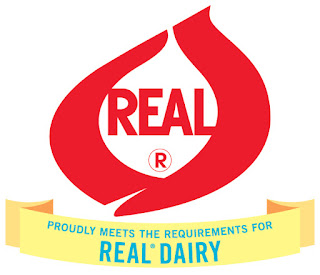All too often the routine blood tests fail to detect a significant percentage of low thyroid cases. Frequently sick patients are told their labs are normal, with values falling within reference ranges, yet they are suffering. Symptoms can be debilitating and may include depression, anxiety, unexplained weight gain, severe fatigue, hair loss, brain fog, constipation and sleep issues. Women often have menstrual cycle irregularities and trouble getting or staying pregnant. I see it every day. It’s unfortunately common and estimated that half of all thyroid disorders may be undiagnosed, leaving patients to suffer without treatment options.
The lab range used for routine testing has been a controversial topic in medicine in recent years. There is much debate and arguing as to what the actual range should be and what normal is. I began to examine this issue in the ‘90s in response to seeing literally hundreds of patients with thyroid-type symptoms and all with normal test results.
First some background: The thyroid is a small butterfly-shaped gland located at the front of the neck just under the voice box. It produces hormones T4 (thyroxine) and T3 (triiodothyronine) responsible for driving energy production and metabolism in every cell in the body. Having the right amount is critical to good health and imbalances can manifest in many different ways depending on which tissue is affected.
Most doctors today diagnose thyroid disorders by doing a simple blood test to check levels of TSH. Some also include levels of T3 or T4. Thyroid Stimulating Hormone is released by a gland in the brain called the pituitary. As the name suggests, this is the way your brain talks to the thyroid to stimulate output. More gets released when thyroid function is low and not producing enough T4 and T3 to regulate the body. A high level of TSH is the brain’s way of saying, “hey thyroid, you need to work a little harder.” A TSH value that’s higher than the lab range means function is very low and needs a push-sometimes in the form of medication.
Seems straightforward, but what level is considered high enough to treat?
Some doctors are still using the old standard and consider a TSH level over 5 mlU/L worthy of treatment. This isn’t accurate, according to research. The American Association of Clinical Endocrinology currently recommends treatment for anyone over 4.1. Interestingly, back in 2002 they made a statement recommending a limit of 3mlU/L. The National Academy of Clinical Biochemistry however, has recommended beginning treatment at 2.5.
A study from 2005 concluded that the accepted reference range of 4.5mlU/L was too high and no longer valid due to A) increased sensitivity of testing assays and B) contamination of those ranges by including people with various levels of thyroid dysfunction who actually increased the average TSH level (1).
Why is all of this important? Inconsistencies and changes in reference ranges can be the difference between sick patients getting help or being told they are fine and denied treatment.
On a deeper level, Andersen et al studied this issue and found a huge difference between the population and individual reference ranges. A test result falling within the normal lab reference limit is not necessarily normal or optimal for the person being tested (2). I treat people, not their lab results. As clinicians we have a duty to practice personalized medicine based on the specific needs of each individual.
More problems with standard testing...
Thyroid hormone resistance cannot be detected on routine tests. Studies point out that levels of thyroid hormone can test normal in blood but may actually be low in the tissues that so desperately need it. Patients with reflux and Alzheimer’s were found to have lower levels of T3 in esophagus and brain tissue than normal controls. Both groups tested normal on routine blood tests.
For some patients with hypothyroidism, the TSH levels may not rise in the blood. I see this frequently too. The TSH will be perfectly normal or even low due to a variety of mechanisms. Routine tests then will be unable to detect it.
Thyroid panels are too limited. A more comprehensive test would include looking beyond TSH to total T3 and T4, free T3 and T4, Reverse T3, and antibody levels commonly found with Hashimoto’s disease (the most common cause of low thyroid function). I use an expanded panel plus a highly specialized test called the TRH stimulation test.
TRH — Shining a light on undiagnosed low thyroid.
For almost 20 years, I have relied on a much more sensitive test called the TRH stimulation. This is a three-step challenge similar to a cardiac stress or glucose tolerance test. Thyrotropin Releasing Hormone is a natural compound normally made in an area of the brain called the hypothalamus. In this test, a small amount is injected into the patient, triggering the pituitary to release its stored TSH on command. Even if the TSH level is normally low in the blood, it will be quite high within the pituitary gland itself in cases of underactive thyroid. Upon stimulation, TSH will surge into the blood causing levels to rise to easily detectable levels. Because of this, I am able to pick up on cases of hypothyroidism at the onset of symptoms, sometimes years before the TSH reflects the disease.
There was a time when all doctors used the TRH. As medicine made advances and assays became more sensitive, the TSH replaced it becoming the widely accepted way to diagnose thyroid disorders. Doctors embraced the ease of doing one simple blood draw and lowered costs. The TSH does work to diagnose a large number of people every year, but it misses too many leaving them needlessly suffering.
Shortly after this change in testing methods took place, I noticed a huge rise in unexplained chronic fatigue cases. There was an epidemic in patients complaining of thyroid-like symptoms-all with normal lab results according to TSH levels. So back in the ‘90s I began working to find a way to bring back the TRH test. It wasn’t easy but the results were amazing. So many of those with unexplained pain, symptoms and chronic fatigue actually turned out to have very treatable hypothyroidism.
Patients are more than a collection of lab numbers! Strictly relying on routine tests without careful consideration to how they feel doesn’t serve them. It’s about digging deeper, looking for function through provocation and shuffling things around in order to get to the truth and corroborate what patients already know. Who you are, how you feel, your lifestyle and comprehensive testing make up the whole and weave together to form the blueprint for treatment and the road to recovery. The art of medicine is just as important as the science.
Sources:
1) Wartofsky L, Dickey RA, The evidence for a narrower thyrotropin reference range is compelling. J Clin Endocrinol Metab. 2005 Sep;90(9):5483-8.
2) Andersen Stig, Michael Klaus, et al, Narrow Individual Variations in Serum T4 and T3 in the Normal Subjects: A Clue to the Understanding of Subclinical Thyroid Disease. Journal of Clinical Endocrinology & Metabolism 87(3):1068-1072
 I would like to add at this point that when deciding on which cheese to eat often opt for the harder cheeses. Why?
I would like to add at this point that when deciding on which cheese to eat often opt for the harder cheeses. Why?















